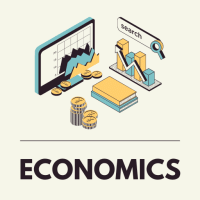Commerce Exam > Commerce Questions > Labour intensive technique would get chosen i...
Start Learning for Free
Labour intensive technique would get chosen in
- a)Labour surplus economy
- b)Developing economies
- c)Developed economies
- d)Capital surplus economy
Correct answer is option 'A'. Can you explain this answer?
| FREE This question is part of | Download PDF Attempt this Test |
Verified Answer
Labour intensive technique would get chosen ina) Labour surplus econom...
The labor surplus economy model has as its basic premise the inability of unskilled agricultural labor markets to clear in countries with high man/land ratios. In such situations, the marginal product of laboris likely to fall below a bargaining wage, related to the average rather than the marginal product.
Most Upvoted Answer
Labour intensive technique would get chosen ina) Labour surplus econom...
Labour intensive techniques are those production techniques that require a significant amount of labor input compared to other factors of production such as capital or technology. These techniques are typically characterized by a high ratio of labor to capital.
In a labor surplus economy, there is an excess supply of labor relative to the demand for labor. This means that there are more workers available than there are jobs available. In such an economy, labor is usually abundant and cheap. As a result, firms tend to favor labor-intensive techniques of production to take advantage of the low labor costs. This is because using labor-intensive techniques allows firms to employ a larger number of workers at a lower cost, thus maximizing their output and profits.
In a labor surplus economy, the following factors contribute to the preference for labor-intensive techniques:
1. Cheap labor: With a surplus of labor, the wages of workers are typically low. This makes labor a relatively cheap factor of production compared to capital. By employing more workers, firms can take advantage of the low labor costs and increase their production levels.
2. Limited access to capital: In economies with a labor surplus, there is often limited access to capital due to the low level of investment and financial resources. As a result, firms may not have the necessary capital to invest in advanced technology or machinery. Labor-intensive techniques, which require less capital investment, are therefore more feasible in such economies.
3. Low productivity levels: In labor surplus economies, the level of education and skill development among the workforce may be relatively low. This can result in lower productivity levels compared to developed economies. Using labor-intensive techniques allows firms to make the most of the available labor resources, even with lower productivity levels.
It is important to note that the preference for labor-intensive techniques in a labor surplus economy is a result of the specific economic conditions prevailing in such an economy. In economies with a labor shortage or higher levels of capital, firms may choose to adopt capital-intensive techniques that rely more on advanced technology and machinery.
In a labor surplus economy, there is an excess supply of labor relative to the demand for labor. This means that there are more workers available than there are jobs available. In such an economy, labor is usually abundant and cheap. As a result, firms tend to favor labor-intensive techniques of production to take advantage of the low labor costs. This is because using labor-intensive techniques allows firms to employ a larger number of workers at a lower cost, thus maximizing their output and profits.
In a labor surplus economy, the following factors contribute to the preference for labor-intensive techniques:
1. Cheap labor: With a surplus of labor, the wages of workers are typically low. This makes labor a relatively cheap factor of production compared to capital. By employing more workers, firms can take advantage of the low labor costs and increase their production levels.
2. Limited access to capital: In economies with a labor surplus, there is often limited access to capital due to the low level of investment and financial resources. As a result, firms may not have the necessary capital to invest in advanced technology or machinery. Labor-intensive techniques, which require less capital investment, are therefore more feasible in such economies.
3. Low productivity levels: In labor surplus economies, the level of education and skill development among the workforce may be relatively low. This can result in lower productivity levels compared to developed economies. Using labor-intensive techniques allows firms to make the most of the available labor resources, even with lower productivity levels.
It is important to note that the preference for labor-intensive techniques in a labor surplus economy is a result of the specific economic conditions prevailing in such an economy. In economies with a labor shortage or higher levels of capital, firms may choose to adopt capital-intensive techniques that rely more on advanced technology and machinery.
Attention Commerce Students!
To make sure you are not studying endlessly, EduRev has designed Commerce study material, with Structured Courses, Videos, & Test Series. Plus get personalized analysis, doubt solving and improvement plans to achieve a great score in Commerce.

|
Explore Courses for Commerce exam
|

|
Similar Commerce Doubts
Labour intensive technique would get chosen ina) Labour surplus economyb) Developing economiesc) Developed economiesd) Capital surplus economyCorrect answer is option 'A'. Can you explain this answer?
Question Description
Labour intensive technique would get chosen ina) Labour surplus economyb) Developing economiesc) Developed economiesd) Capital surplus economyCorrect answer is option 'A'. Can you explain this answer? for Commerce 2024 is part of Commerce preparation. The Question and answers have been prepared according to the Commerce exam syllabus. Information about Labour intensive technique would get chosen ina) Labour surplus economyb) Developing economiesc) Developed economiesd) Capital surplus economyCorrect answer is option 'A'. Can you explain this answer? covers all topics & solutions for Commerce 2024 Exam. Find important definitions, questions, meanings, examples, exercises and tests below for Labour intensive technique would get chosen ina) Labour surplus economyb) Developing economiesc) Developed economiesd) Capital surplus economyCorrect answer is option 'A'. Can you explain this answer?.
Labour intensive technique would get chosen ina) Labour surplus economyb) Developing economiesc) Developed economiesd) Capital surplus economyCorrect answer is option 'A'. Can you explain this answer? for Commerce 2024 is part of Commerce preparation. The Question and answers have been prepared according to the Commerce exam syllabus. Information about Labour intensive technique would get chosen ina) Labour surplus economyb) Developing economiesc) Developed economiesd) Capital surplus economyCorrect answer is option 'A'. Can you explain this answer? covers all topics & solutions for Commerce 2024 Exam. Find important definitions, questions, meanings, examples, exercises and tests below for Labour intensive technique would get chosen ina) Labour surplus economyb) Developing economiesc) Developed economiesd) Capital surplus economyCorrect answer is option 'A'. Can you explain this answer?.
Solutions for Labour intensive technique would get chosen ina) Labour surplus economyb) Developing economiesc) Developed economiesd) Capital surplus economyCorrect answer is option 'A'. Can you explain this answer? in English & in Hindi are available as part of our courses for Commerce.
Download more important topics, notes, lectures and mock test series for Commerce Exam by signing up for free.
Here you can find the meaning of Labour intensive technique would get chosen ina) Labour surplus economyb) Developing economiesc) Developed economiesd) Capital surplus economyCorrect answer is option 'A'. Can you explain this answer? defined & explained in the simplest way possible. Besides giving the explanation of
Labour intensive technique would get chosen ina) Labour surplus economyb) Developing economiesc) Developed economiesd) Capital surplus economyCorrect answer is option 'A'. Can you explain this answer?, a detailed solution for Labour intensive technique would get chosen ina) Labour surplus economyb) Developing economiesc) Developed economiesd) Capital surplus economyCorrect answer is option 'A'. Can you explain this answer? has been provided alongside types of Labour intensive technique would get chosen ina) Labour surplus economyb) Developing economiesc) Developed economiesd) Capital surplus economyCorrect answer is option 'A'. Can you explain this answer? theory, EduRev gives you an
ample number of questions to practice Labour intensive technique would get chosen ina) Labour surplus economyb) Developing economiesc) Developed economiesd) Capital surplus economyCorrect answer is option 'A'. Can you explain this answer? tests, examples and also practice Commerce tests.

|
Explore Courses for Commerce exam
|

|
Suggested Free Tests
Signup for Free!
Signup to see your scores go up within 7 days! Learn & Practice with 1000+ FREE Notes, Videos & Tests.



















